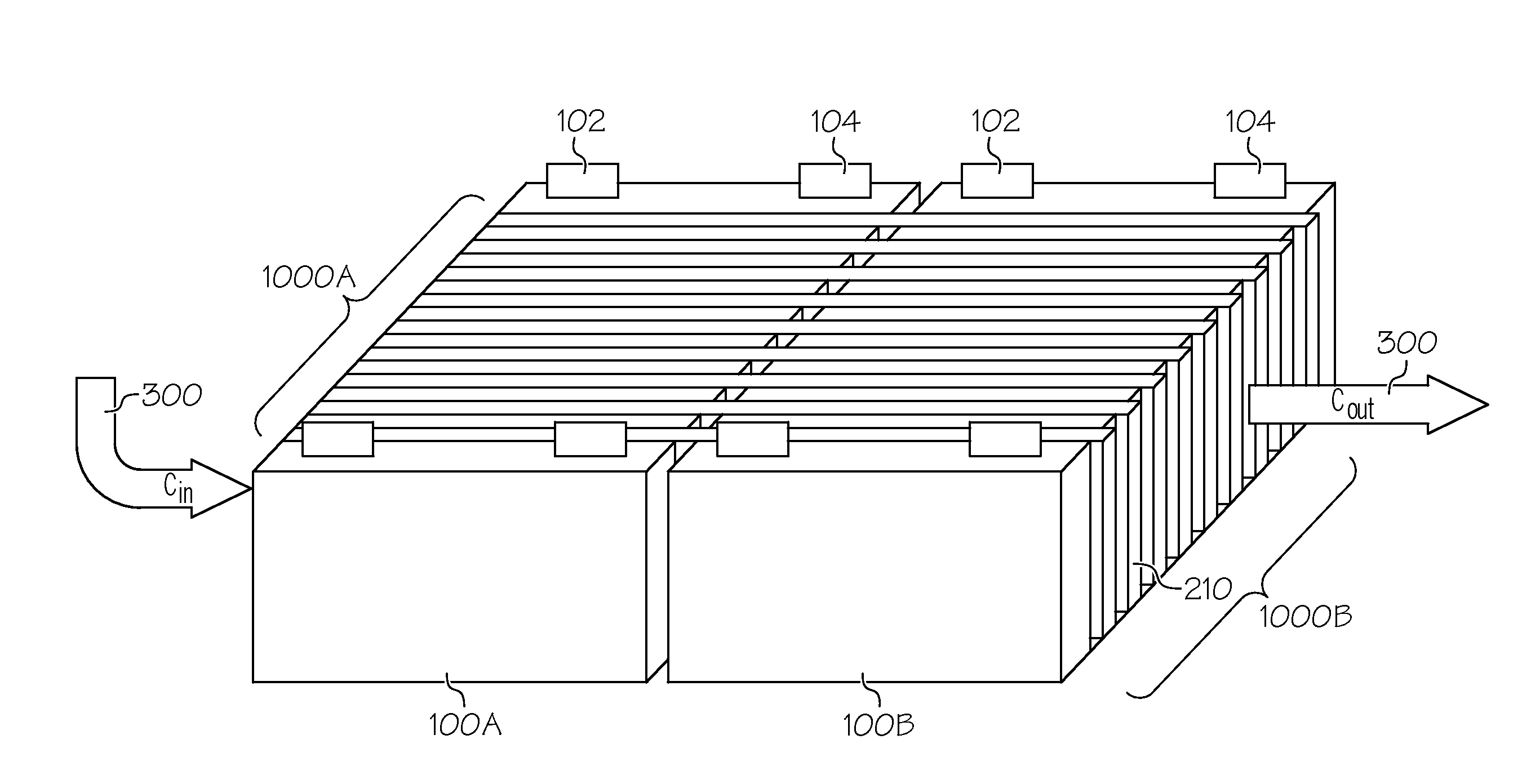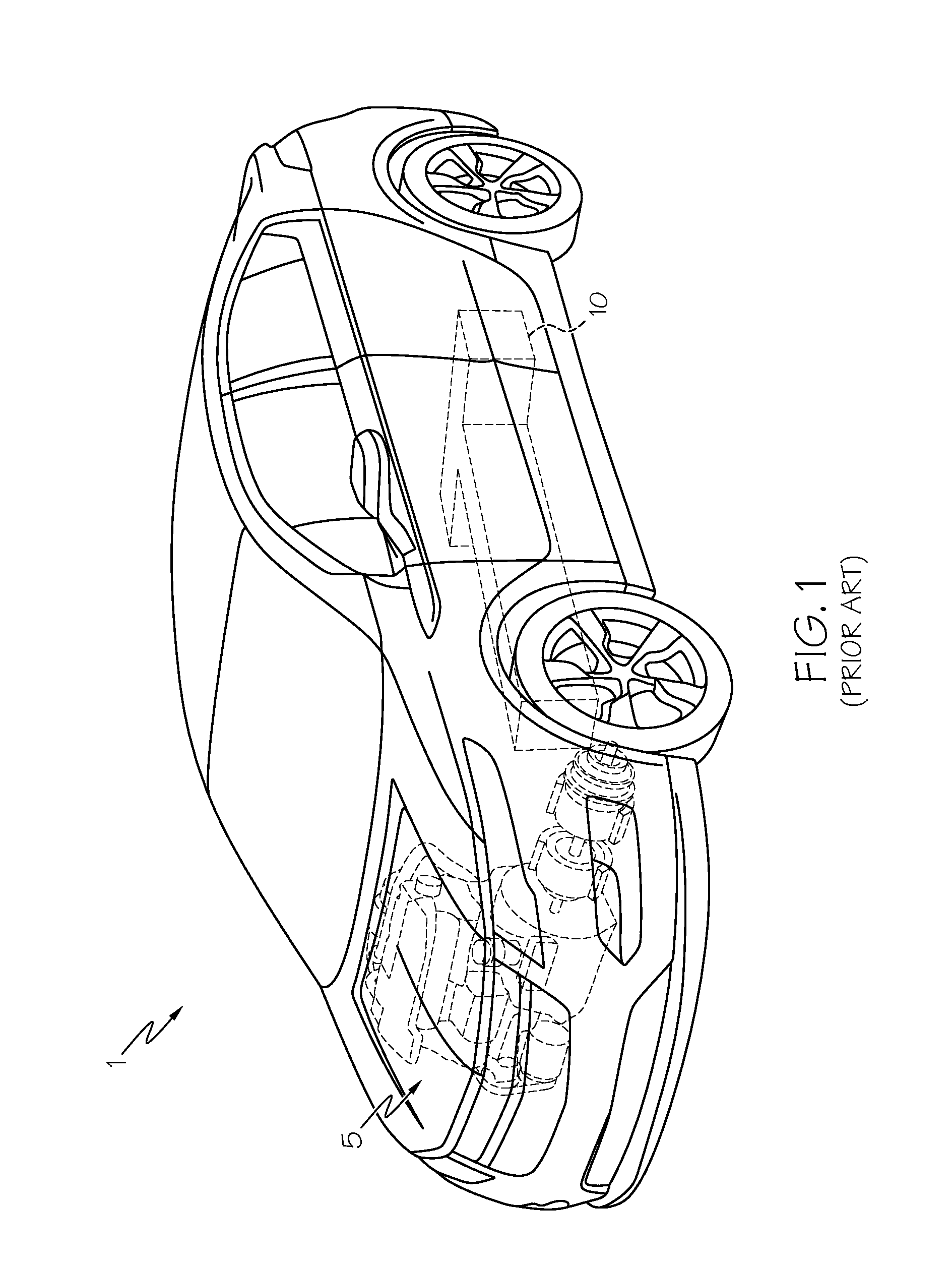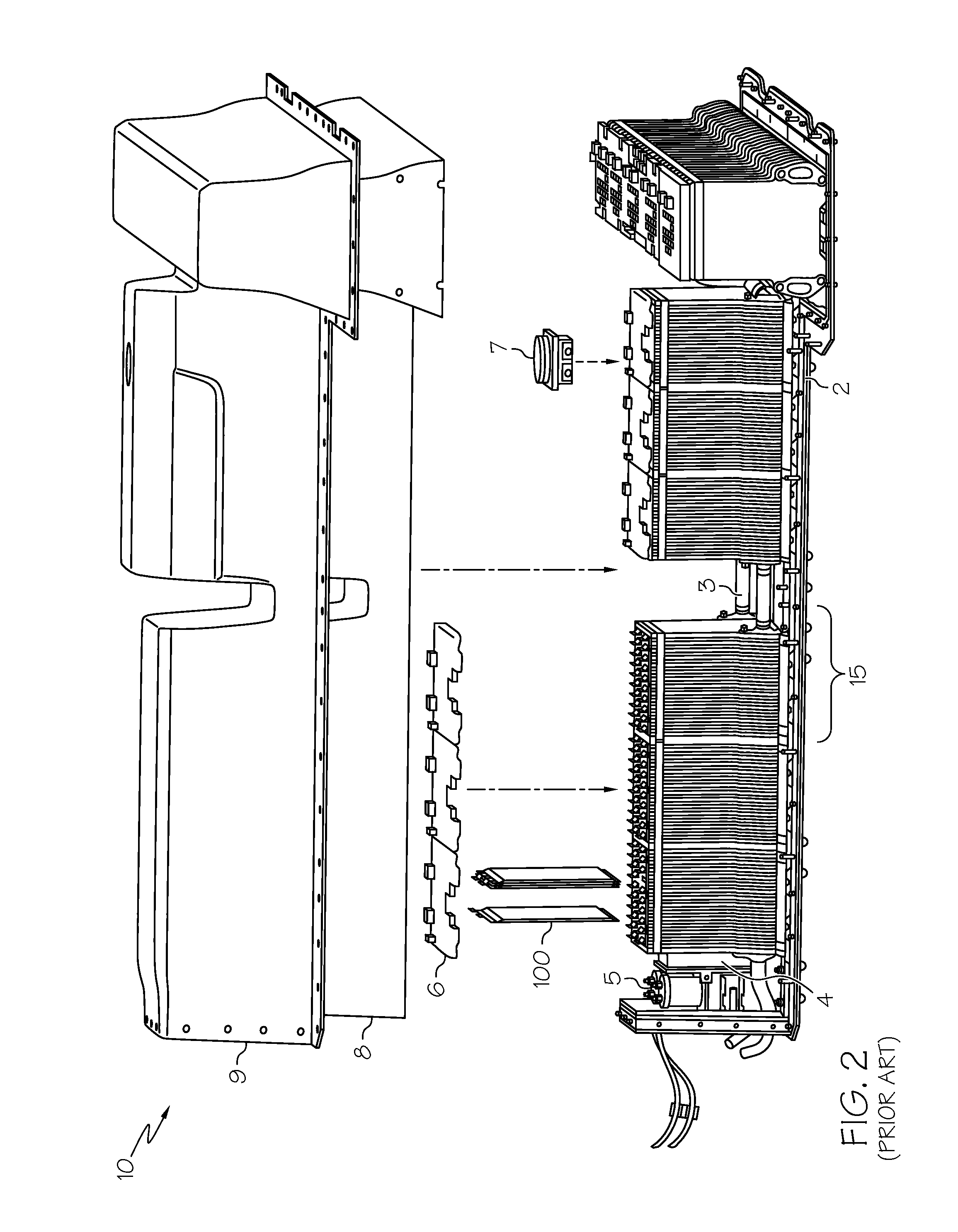Series cooled module cooling fin
a cooling fin and module technology, applied in the field of cooling fins, can solve the problems of accelerated capacity fade and other undesirable cell conditions, premature aging, and prone to more complex ducting, and achieve optimal operating temperatures and temperature uniformity of cells, preserve the relative commonality of individual cell voltages, and increase the effect of disparities
- Summary
- Abstract
- Description
- Claims
- Application Information
AI Technical Summary
Benefits of technology
Problems solved by technology
Method used
Image
Examples
Embodiment Construction
[0015]Referring first to FIGS. 1 and 2, a vehicle 1 including a hybrid propulsion system in the form of a battery pack 10 and a conventional ICE 5 in accordance with the prior art is shown. As mentioned above, such a vehicle 1 is known as an HEV. It will be further appreciated by those skilled in the art that vehicle 1 may not require an ICE 5; in such case, rather than being an HEV, it is an EV; either form is within the scope of the present invention. In the present context, the terms “battery cell”, “battery module” and “battery pack” (as well as their shortened variants “cell”, “module” and “pack”) are use to describe different levels of components of an overall battery-based power system, as well as their assembly. For example, numerous individual battery cells form the building blocks of battery modules (in conjunction with ancillary equipment) in turn make up the completed battery pack.
[0016]Referring with particularity to FIG. 2, battery pack 10 according to the prior art is...
PUM
| Property | Measurement | Unit |
|---|---|---|
| temperature | aaaaa | aaaaa |
| heat rejection | aaaaa | aaaaa |
| temperature | aaaaa | aaaaa |
Abstract
Description
Claims
Application Information
 Login to View More
Login to View More - R&D
- Intellectual Property
- Life Sciences
- Materials
- Tech Scout
- Unparalleled Data Quality
- Higher Quality Content
- 60% Fewer Hallucinations
Browse by: Latest US Patents, China's latest patents, Technical Efficacy Thesaurus, Application Domain, Technology Topic, Popular Technical Reports.
© 2025 PatSnap. All rights reserved.Legal|Privacy policy|Modern Slavery Act Transparency Statement|Sitemap|About US| Contact US: help@patsnap.com



